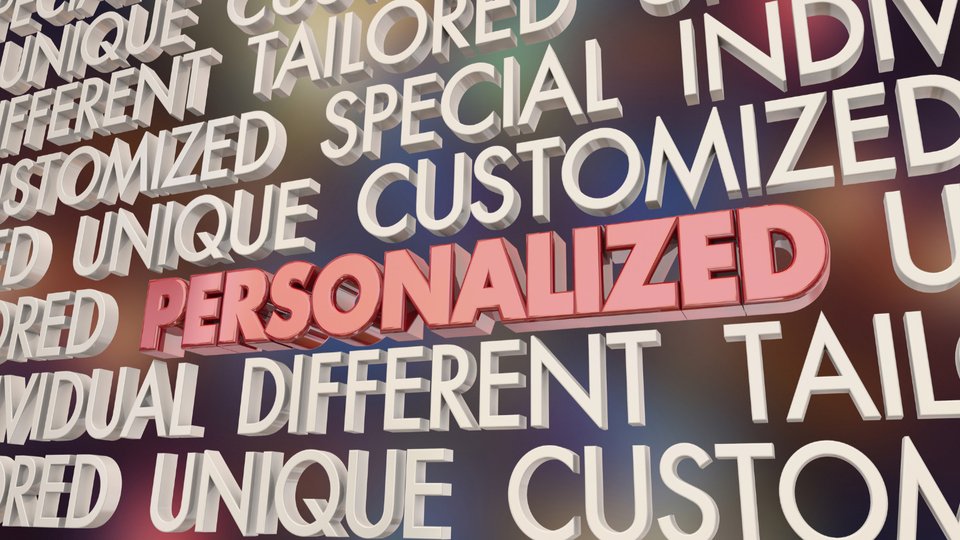Marketing
How data plays into crafting the personalized retail experience
Consumers want and expect a personalized experience. For retailers that means data analysis.

January 13, 2023 by Judy Mottl — Editor, RetailCustomerExperience.com & DigitalSignageToday.com
Personalization in the retail shopping experience is projected to be a big trend in 2023 for two reasons: Consumers want it, retailers make higher profits.
In fact, best-in-class retailers can see a 25% uptick in revenue from personalization strategies, according to Boston Consulting Group's personalization maturity index. A McKinsey research report reveals 71% of consumers expect companies to deliver personalized experiences, with 80% of consumers stating they are more likely to make a purchase if the company offers a personalized experience.
A big factor when it comes to a personalized retail experience is data, according to Alessandro Casartelli, executive director at GP Bullhound, and author of the company's Q3 2022 insights report which includes insight on retail digital commerce. GP Bullhound is a technology advisory and investment firm.
The role of data
Personalization starts with first- and third-party data, which is collected and processed in order to drive insights into consumer shopping behaviors, according to Casartelli, who noted a BCG report into retail experiences revealed consumers increase spend by 40% and are 110% more likely to add additional items to a basket if they feel they have been offered a personalized experience.
RetailCustomerExperience reached out to Casartelli in an email interview to get deeper insight on the role data plays in personalization and what retailers need to do when crafting a rewarding personalization experience.
Q. Consumers want personalized experience but that requires data — is getting data from consumers still hard given privacy concerns or are consumers willing to provide data in exchange for personalization?
A. Data is collected in numerous ways but mostly through provision by the customer through consent to cookies, tracking of customer behavior and buying aggregated third-party data from brokers. Customer data (first-party data) is collected by retailers through various methods including previous purchases, site visits (tracked via IP address), what is viewed on the website and delivery address.
The method that has caused most controversy over privacy is data collection through cookies. They do not collect data about you as a person, but once bundled with the multiple types of cookies, a profile/persona is created that can give valuable insight into different customer demographics enabling the prediction of behaviors and trends, prompting privacy concerns that have led to the regulation known as the General Data Protection Regulation which has, for the sake of consumer data protection, made it increasingly difficult for businesses to collect data without prior consent by moving to an opt-in default option.
Despite this, according to recent surveys, a large majority are happy to allow retailers/businesses access to their data, but they expect a personalized experience in return. Younger consumers including Gen Z and millennials are more comfortable sharing their data compared to the older generation. At the end, despite differing opinions regarding data collection, 71% of consumers expect personalization from the brand or business they are engaging with, according to a recent McKinsey & Co survey.
Q. What are some initial steps retailers need to take to create a personalized experience and also what are some best practices?
A. There is a spectrum of offerings available to retailers dependent on how mature their personalization efforts and strategy are. From emails and loyalty programs to Amazon-level personalization which consists of individual profiles on each of their customers that drive a personalized experience with the aim to reduce the time and friction between browsing and purchasing.
Initial steps that e-commerce businesses may take with the data they most likely already possess is accumulating the data such as location, browsing history, gender, purchase history and type of purchases to form a basis for segmentation of customers and enabling creation of a platform for analysis to occur. Through this base data layer, personalization strategies such as targeted advertisements, bespoke email marketing and personalized recommendations can start to be added to specific demographics based on the granularity and volume of data available.
Initial best practices include testing content and collecting the performance data of what is achieving results in order to drive deeper insights into particular segments or customer groups. A good practice to support this process and embark on advancing personalization techniques is starting small by targeting one individual product, customer group or business segment to measure ROI on specific personalization efforts. None of this will have much effect without also understanding and considering each stage of your customers' journey, making sure to, where possible, add value to them and their experience.
Q. Can you provide a hypothetical example of a good personal experience and one that isn't?
A. Good personalization experiences revolve around reducing friction whilst enhancing the relationship through personalized touchpoints during the journey of the consumer to final point of purchase. Examples vary but can be anything from instant recognition of the country they are visiting from and corresponding language to returning customer offers to the revenue generation by showing other items that the customer may not have originally sought to purchase but end up doing so through being able to predict consumer behavior.
The flip side would be an experience that gives no feeling of connection between the business and customer, such as minimal communication points (email offers, etc.) when the customer is not actively browsing or engaging with the brand, marketing that isn't driven by any form of historical data or basic customer segmentation to basics of getting customer information incorrect, no kept history of previous purchases or sending out too frequent generic communications to customers.
Q. The GP Bullhound report mentions Amazon, Sephora and Nike as providing advanced omnichannel personalization to connect a shopper's journey across all digital and physical retail experiences, but they're big retailers with big budgets. Can smaller retailers and brand accomplish the same success?
A. There is a proven correlation between the maturity of personalization and uplift in revenue, and those with larger budgets are able to allocate larger amounts of capital to invest to develop and increase personalization efforts. Therefore, naturally larger companies have greater customer bases which in turn enables the collection of a proportionately larger amount of first-party data which, when utilized, accord to best practices, results in the ability to fine tune and deliver best-in-class personalized experiences.
However, this does not mean that smaller retailers are unable to reap some of the benefits.
Personalization efforts don't have to start with data intensive methods. For example, Pull & Bear has a "navigational" approach to personalization whereby users enter the website by clicking through basic questions in a gamified manner allowing for a base level of information gathering before they begin shopping without encroaching on or hindering the customer journey. There are platforms that offer personalization features like Evergage's personalized search results function and customer service provision offered by Sprinklr, amongst many other platforms that are enabling small to medium enterprises to capitalize upon the consumer demanded experience. By starting with outsourced services and increasing website traffic smaller retailers are then able to start collecting first party data to begin their personalization journey.





